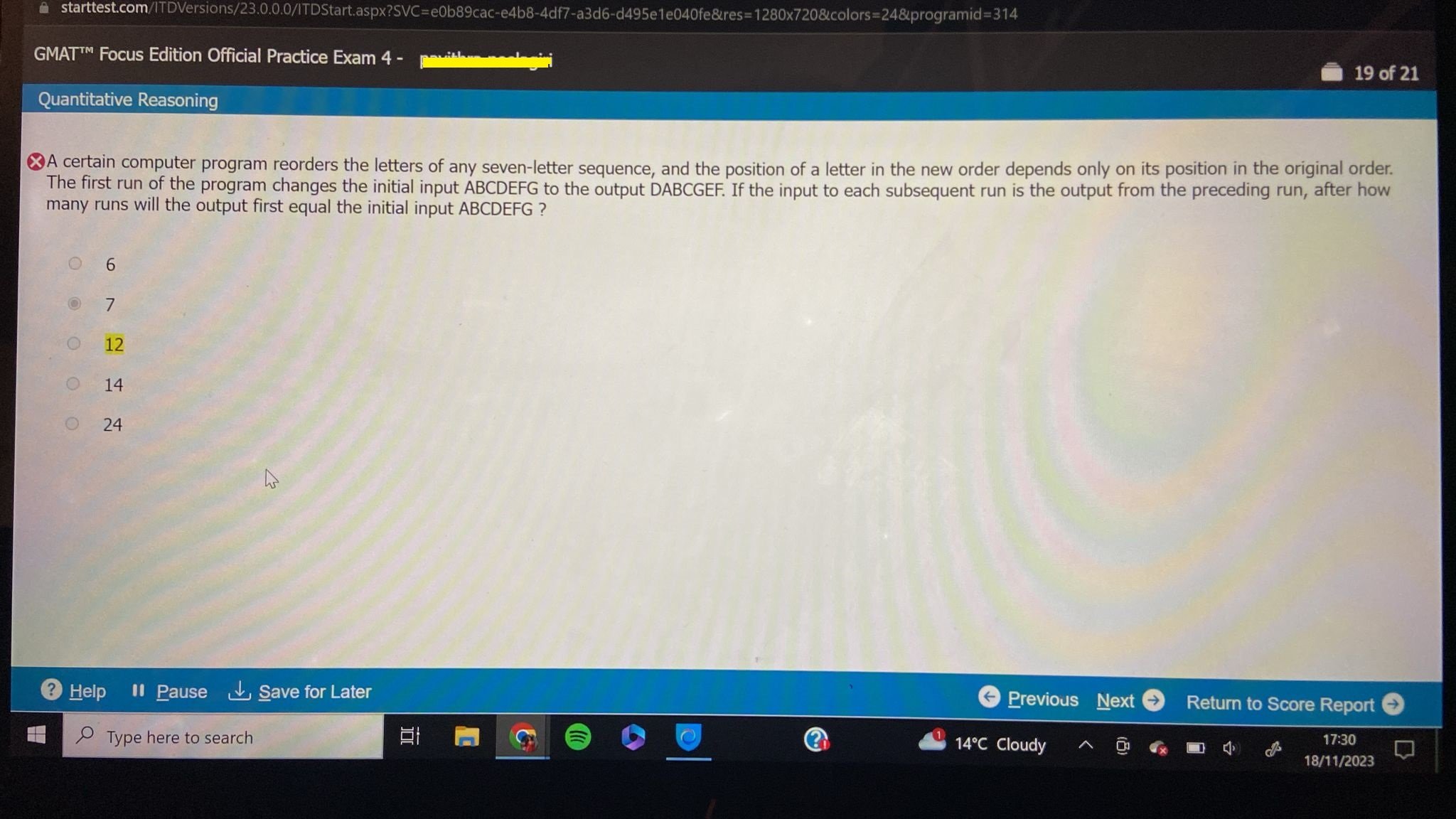Events & Promotions
|
|

GMAT Club Daily Prep
Thank you for using the timer - this advanced tool can estimate your performance and suggest more practice questions. We have subscribed you to Daily Prep Questions via email.
Customized
for You
Track
Your Progress
Practice
Pays
Not interested in getting valuable practice questions and articles delivered to your email? No problem, unsubscribe here.
- Nov 20
07:30 AM PST
-08:30 AM PST
Learn what truly sets the UC Riverside MBA apart and how it helps in your professional growth - Nov 22
11:00 AM IST
-01:00 PM IST
Do RC/MSR passages scare you? e-GMAT is conducting a masterclass to help you learn – Learn effective reading strategies Tackle difficult RC & MSR with confidence Excel in timed test environment - Nov 23
11:00 AM IST
-01:00 PM IST
Attend this free GMAT Algebra Webinar and learn how to master the most challenging Inequalities and Absolute Value problems with ease. - Nov 25
10:00 AM EST
-11:00 AM EST
Prefer video-based learning? The Target Test Prep OnDemand course is a one-of-a-kind video masterclass featuring 400 hours of lecture-style teaching by Scott Woodbury-Stewart, founder of Target Test Prep and one of the most accomplished GMAT instructors.
Kudos
Bookmarks
C
Be sure to select an answer first to save it in the Error Log before revealing the correct answer (OA)!
Difficulty:
 55%
(hard)
55%
(hard)
Question Stats:
71% (02:13) correct 29%
(02:28)
wrong
29%
(02:28)
wrong  based on 1018
sessions
based on 1018
sessions
History
Date
Time
Result
Not Attempted Yet
A certain computer program reorders the letters of any seven-letter sequence, and the position of a letter in the new order depends only on its position in the original order. The first run of the program changes the initial input ABCDEFG to the output DABCGEF. If the input to each subsequent run is the output from the preceding run, after how many runs will the output first equal the initial input ABCDEFG ?
A. 6
B. 7
C. 12
D. 14
E. 24

IMG-20231119-WA0000.jpg [ 366.81 KiB | Viewed 19662 times ]
A. 6
B. 7
C. 12
D. 14
E. 24
Attachment:
IMG-20231119-WA0000.jpg [ 366.81 KiB | Viewed 19662 times ]
gmatophobia
Important thing is to identify the pattern. For that, we need to write down the first few steps. I wrote down the positions and then changed them at every step.
1234567
Step 1: 4123756
Step 2: 3412675
Step 3: 2341567 (Last 3 digits are back in their place)
Step 4: 1234756 (First 4 digits are back in their place but last 3 are now messed up)
...
The first digits will follow a cycle of 4 steps and will be back in original order after 4 steps. The last 3 digits will follow a cycle of 3 steps and will be back in order after 3 steps. So both will be back in order for the first time after 12 steps - the LCM of 4 and 3.
Answer (C)
Pattern recognition is an important skill one must develop for GMAT. Here is another question that needs pattern recognition: https://anaprep.com/arithmetic-pattern- ... roperties/
Kudos
Bookmarks
user1592
The question says that the position of a letter in the new order depends only on its position in the original order. Then we are told that ABCDEFG was reordered to DABCGEF.
- ABCDEFG
DABCGEF
Observe that in the first four letters, ABCD, the change was that the first three letters and the fourth letters were switched: ABCD became DABC. In the last three letters, EFG, the first two letters and the third letter were switched: EFG became GEF.
Hence, the first four letters would change the following way:
ABCD - The initial order
- DABC
- CDAB
- BCDA
- ABCD - Back to the initial order
The last three letters would change the following way:
EFG - The initial order.
- GEF
- FGE
- EFG - Back to the initial order
As we can see, the first four letters cycle back to the initial order after every 4 runs and the last three letters cycle back to the initial order after every 3 runs. Therefore, the entire word will cycle back to the initial order of ABCDEFG in 12 runs:
ABCD - EFG - The initial order
- DABC - GEF
- CDAB - FGE
- BCDA - EFG
- ABCD - GEF
- DABC - FGE
- CDAB - EFG
- BCDA - GEF
- ABCD - FGE
- DABC - EFG
- CDAB - GEF
- BCDA - FGE
- ABCD - EFG - Back to the initial order
Answer: C.












